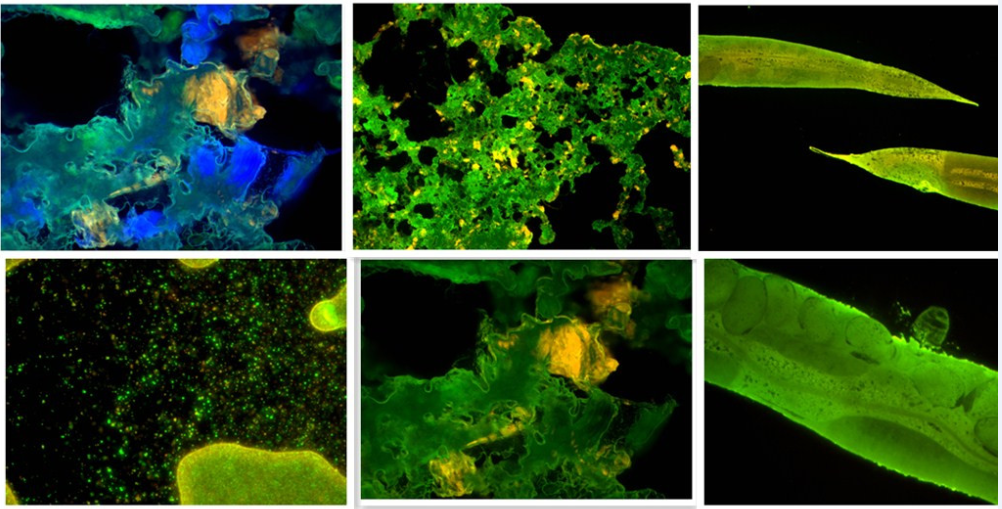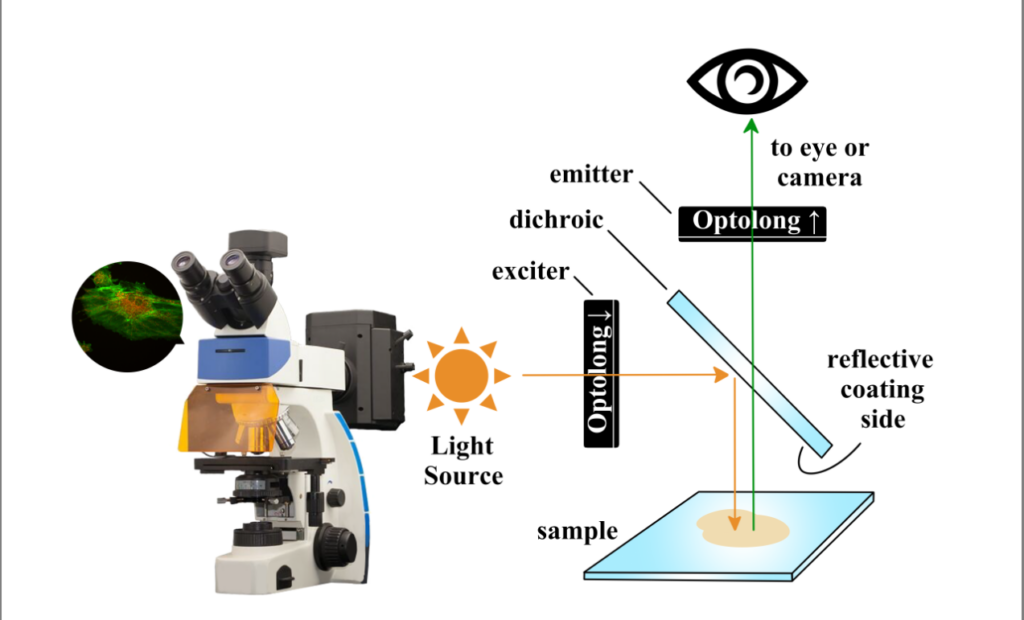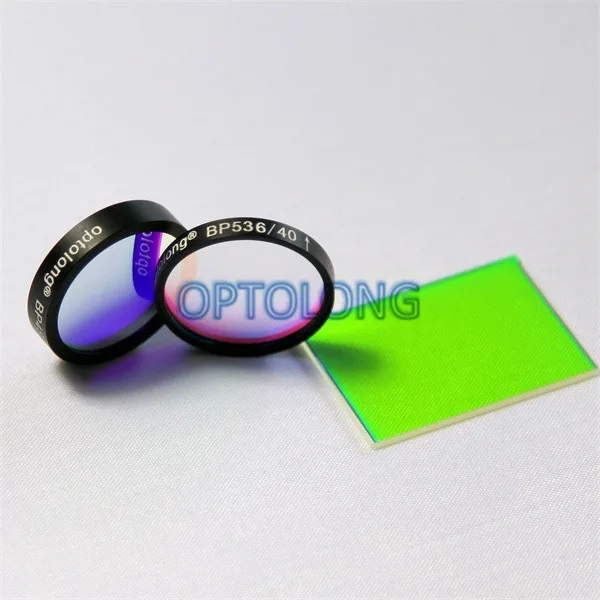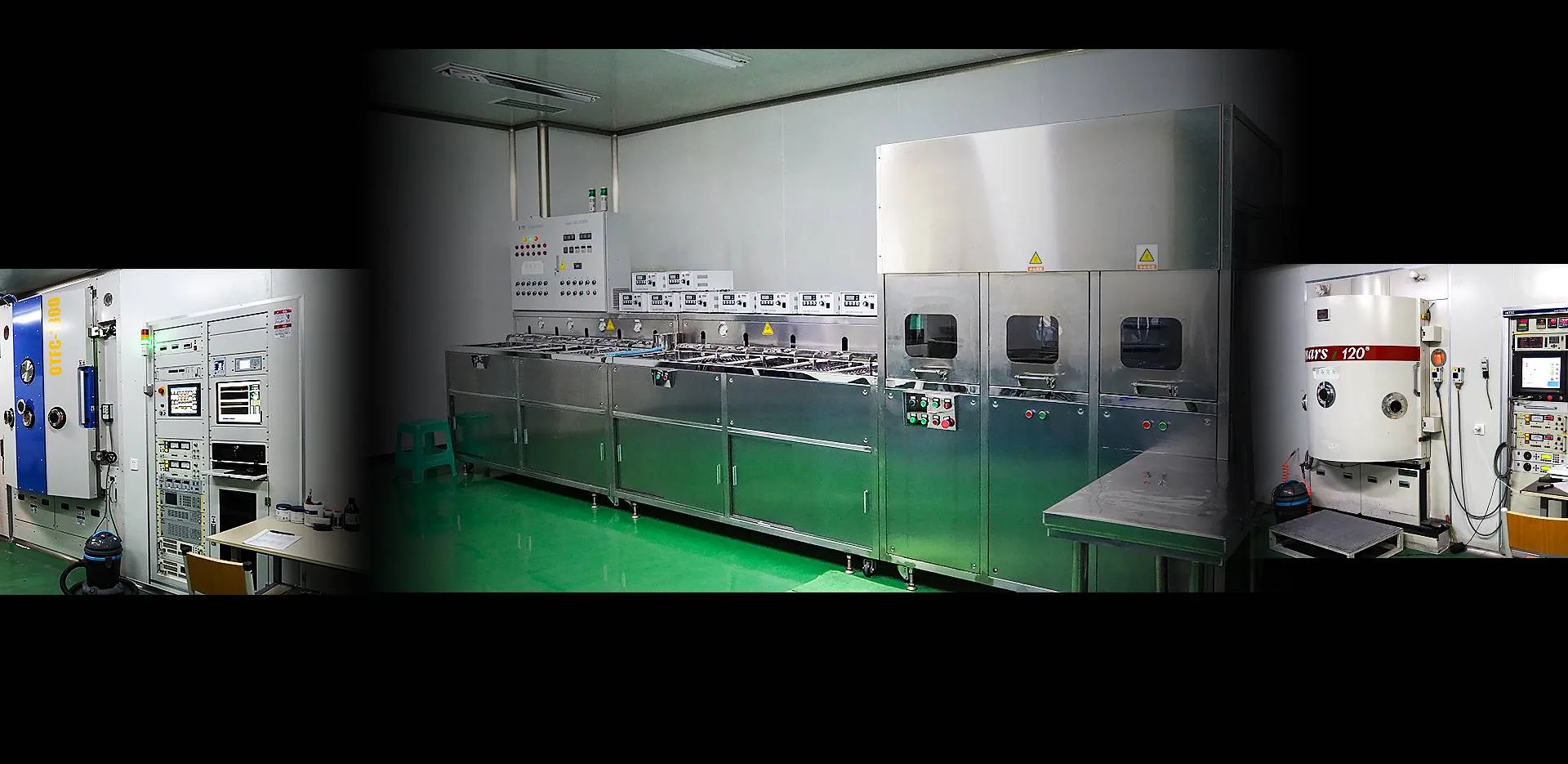
1.What is fluorescence filter ?
Fluorescence filter is a key component used in biomedical and life science instruments.
It’s main function is to separate and select the characteristic band spectrum of the substances’excitation light and emitted fluorescence in the biomedical fluorescence inspection analysis system .
Generally speaking , a fluorescence filter set consists of three different filters.
①Excitation Filter (Size φ25×5mm)
②Emission Filter (Size xn--253-9ja668a.5mm)
③Dichroic Mirror (Size 25.7×36×1mm)

The excitation filter is responsible for selecting appropriate excitation light wavelength ,such as screening white excitation light into blue light ,which is used to excite fluorescein such as GFP .
(Note: If a single-wavelength LED light source is used ,the excitation filter can be omitted . )
The emission filter is responsible for screening the required fluorescence emission light .When the excitation light excite different emitted light ,the emission filter can distinguish different emitted light . In addition ,because many biological tissues have auto-fluorescence and the auto-fluorescence is mostly in red region ,the emission filter can be used to filter out the interference of auto-fluorescence .
(Note: If there is only one kind fluorescence in the sample and no auto-fluorescence interference,the emission filter can be omitted .)
The dichroic mirror is to distinguish excitation light and emission light ,so it’s a very important role .

2.Characterictics of fluorescence filter :
Deep blocking , low auto-fluorescence , good flatness ,which are helpful to get clear fluorescence imaging . Therefore, a good fluorescence filter uses single-piece transparent glass (e.g., B270 ,fused silica) as the substrate and is coated on both sides of the glass . Compared with the conventional fluorescence filter which use multi-piece glued glass or absorbtive glass assisted cut-off, the single-piece type has obvious advantages in fluorescence imaging and the production difficulty is higher ,so the cost will also be higher .
Optolong fluorescence filters are coated on single-piece transparent glass ,and is coated on both sides . (https://www.optolongfilter.com/en/products/fluorescence-filters)
3.Application of fluorescence filter :
Fluorescence filters are widely used in the instruments of life science and biomedicine , including fluorescence microscopy ,laser scanning confocal fluorescence microscopy (LSCM),confocal microscopy, total internal reflection fluorescence microscopy (TIRFM), flow cytometry , RT-PCR and so on .
4.Select suitable fluorescence filter :
How can we select a suitable fluorescence filter for our experiments ?
- The principle of selecting fluorescence filter is to allow the fluorescence/emission light pass through as much as possible at the imaging end , while completely blocking the excitation light, to obtain the highest signal-to-noise ratio .
- Especially for the application of multi-photon excitation and total internal reflection microscopy,the weak noise will cause great interference to the imaging effect,so the SNR is required to be higher .
- Usually we look at the transmittance spectrum of filters ,but for the selection of fluorescence filters , we need to refer to the cut-off spectrum .
- When selecting excitation filter and emission filter , the intersection OD value of the two filters is an important criterion . Generally , it is required that intersection OD of wild-field light source excitation is greater than OD5 , and laser excitation is greater than OD6 , so as to achieve a better fluorescence signal-to-noise ratio .
- Sometimes the combination of excitation transmitted spectrum and emission transmitted spectrum looks perfect,but after coverting to OD value , it is found that the spectral intersection is only OD1,which does not meet the basic requirements of fluorescence imaging . Therefore, it is generally recommended that the transmission spectrum of excitation light and emission light have a certain distance, such as 10nm .
- Fluorescein can also be used to select filters . First , we need to determine the excitation and emission spectra of fluorescein we are using . The filter spectra and fluorescein spectra are then overlapped to determine the suitability of the filter .
- Of course ,when selecting a filter, you also need to consider the spectrum of excitation light source , especially mercury lamps,metal halide lamps and white LEDs ,to avoid selecting areas with weak light sources .
